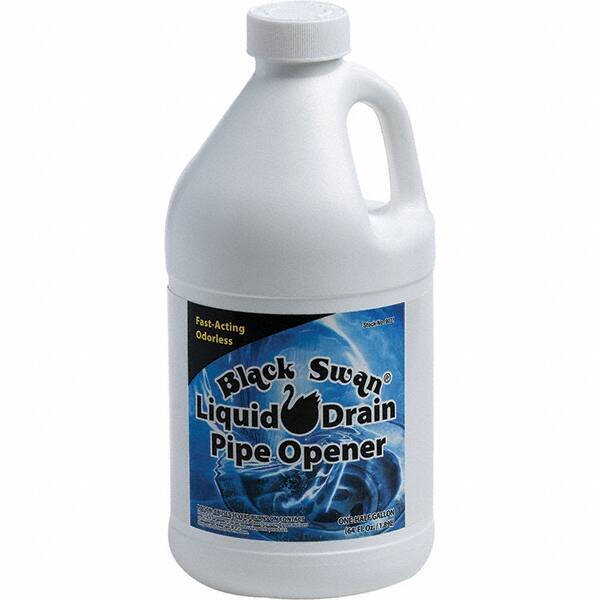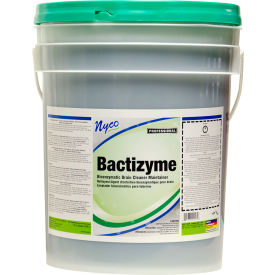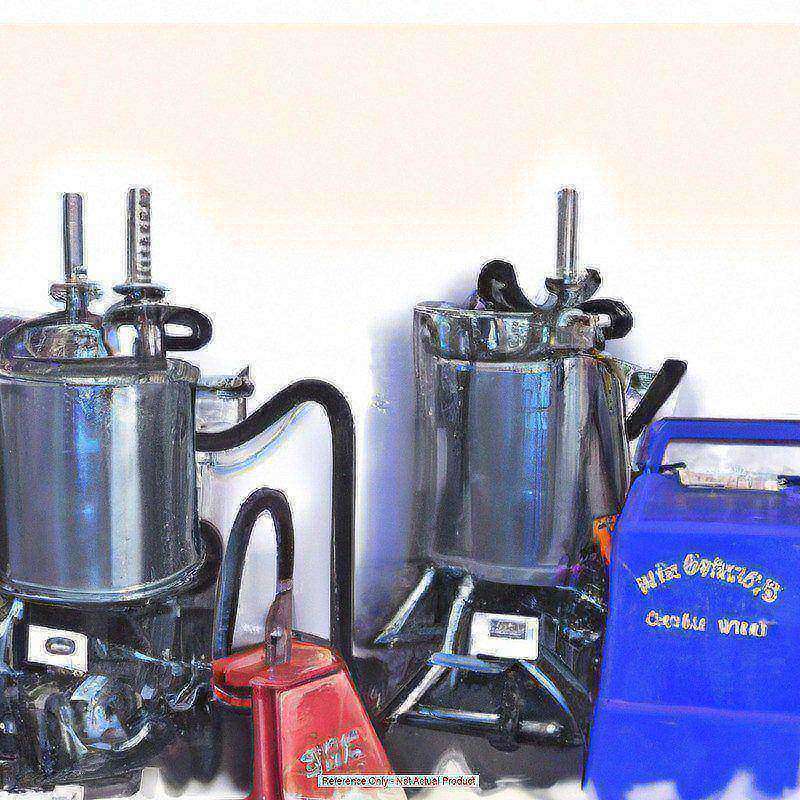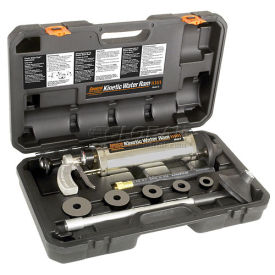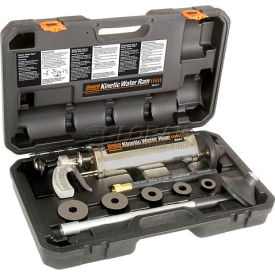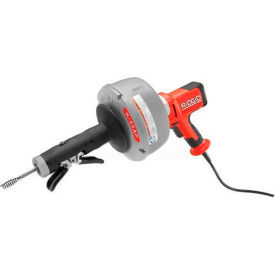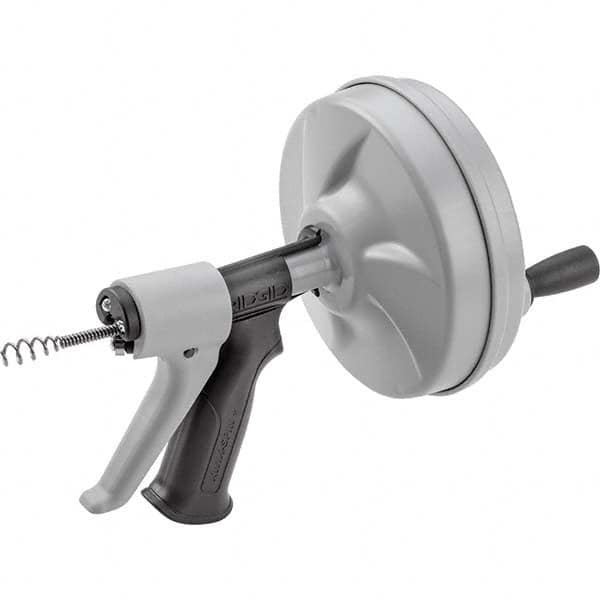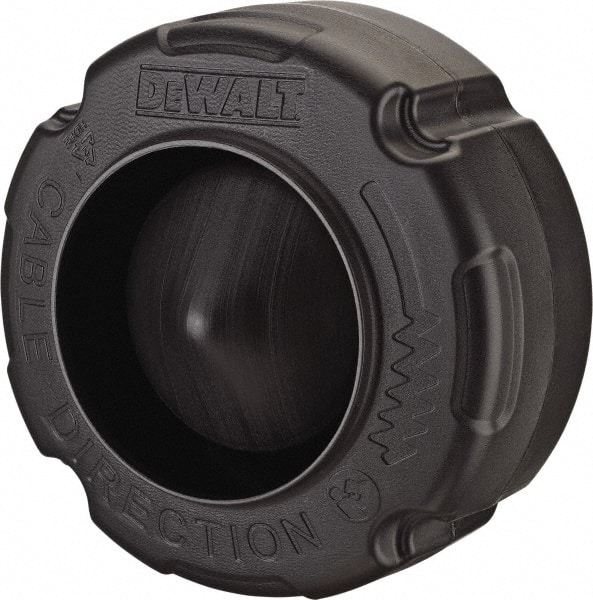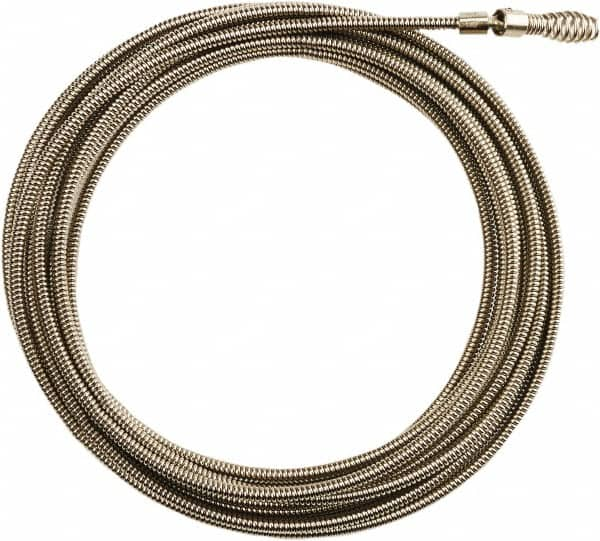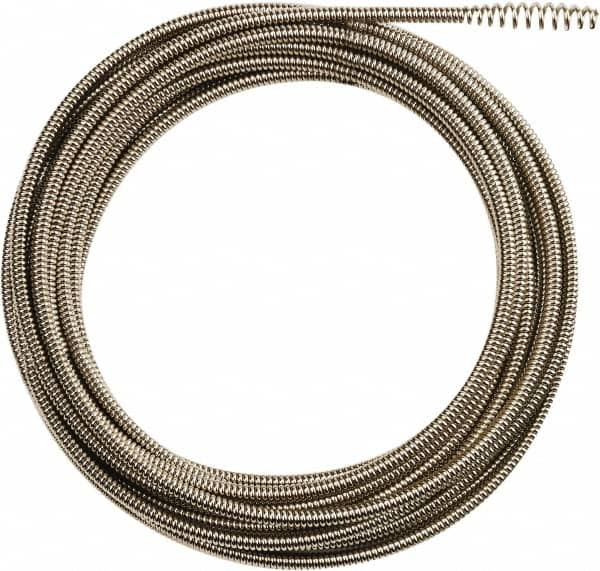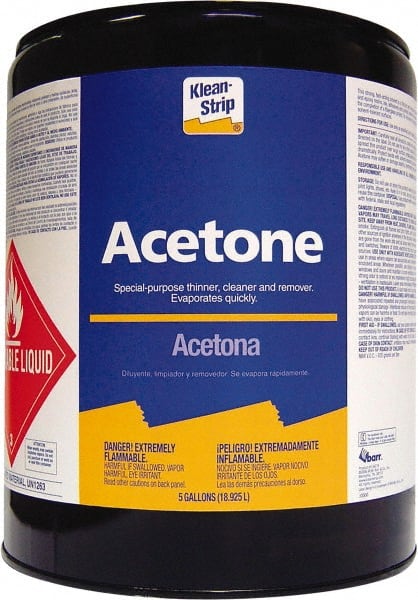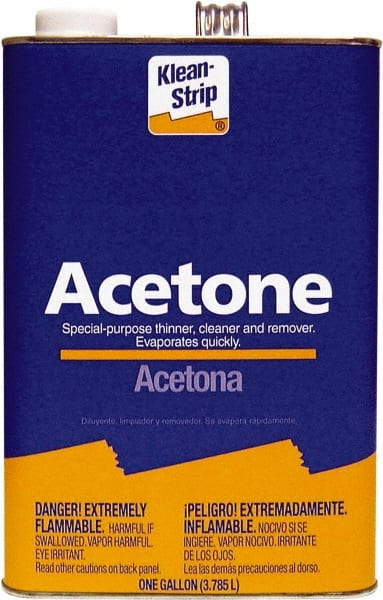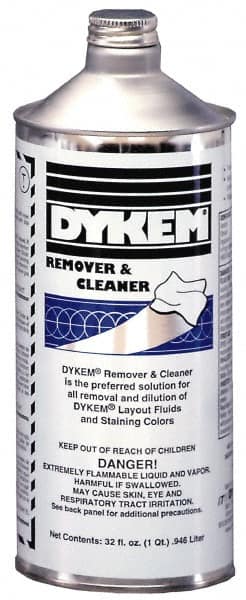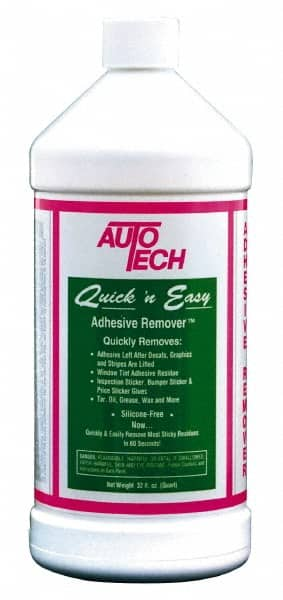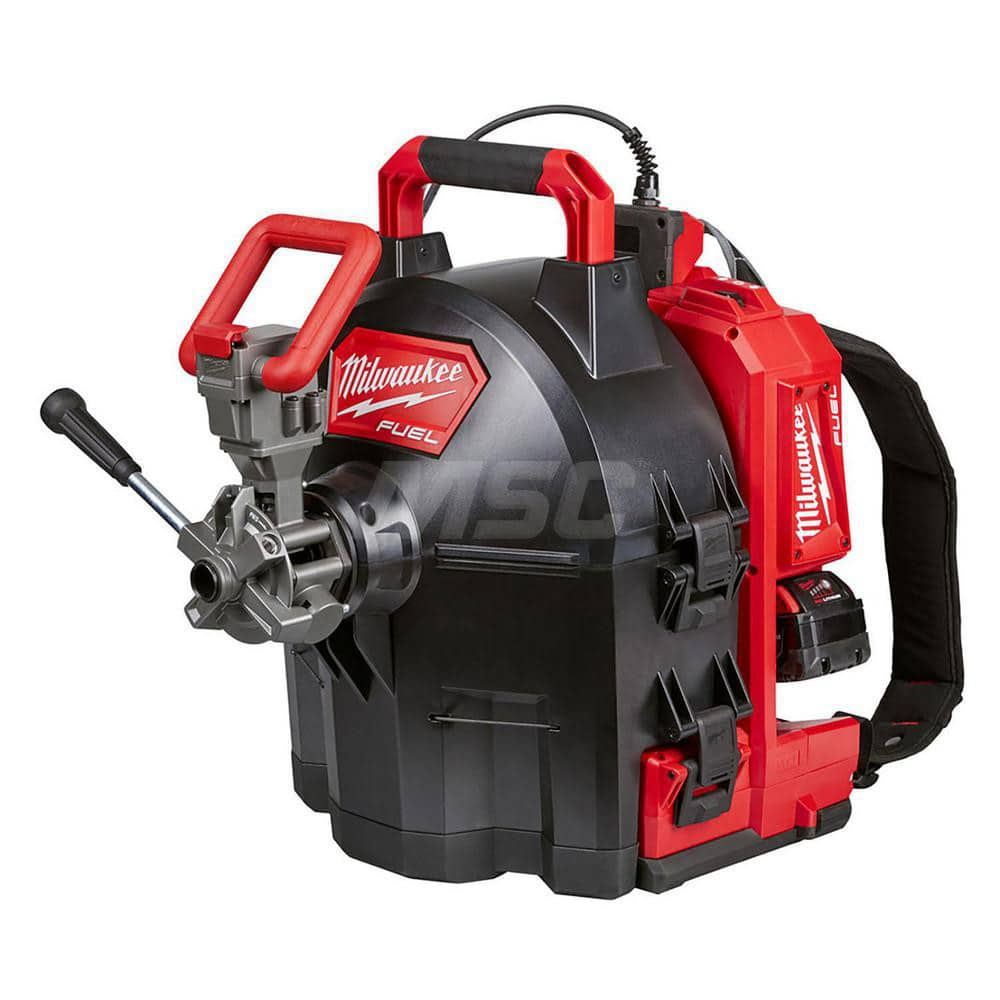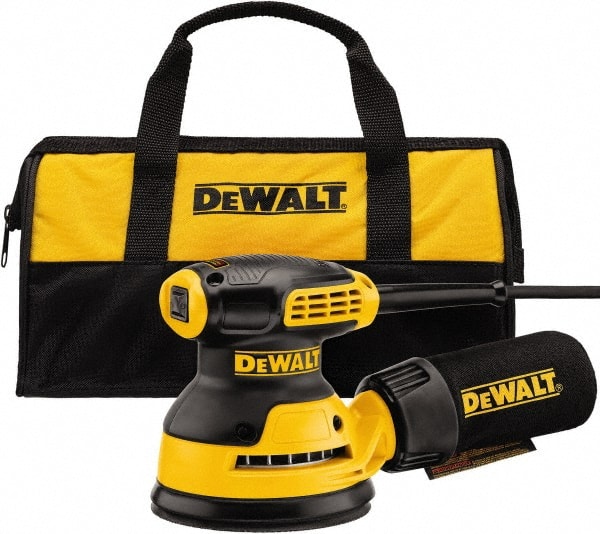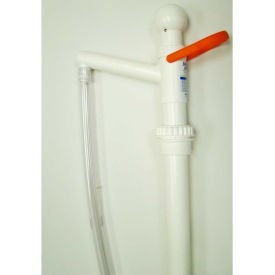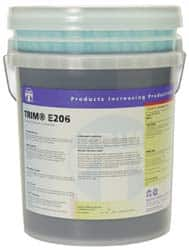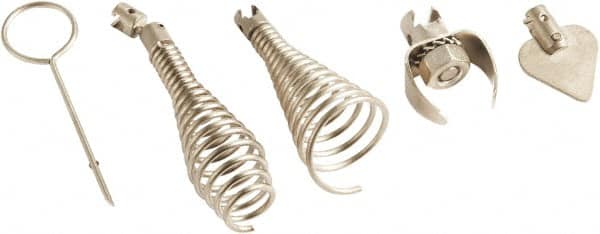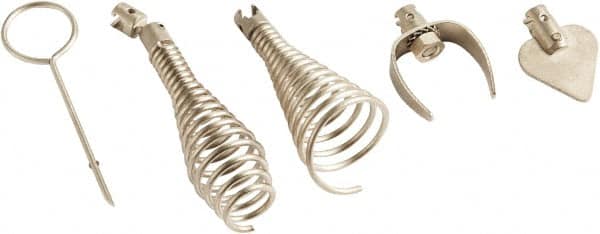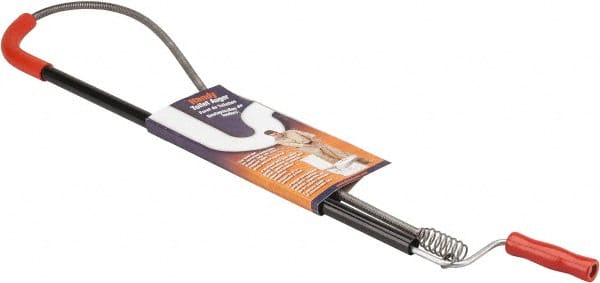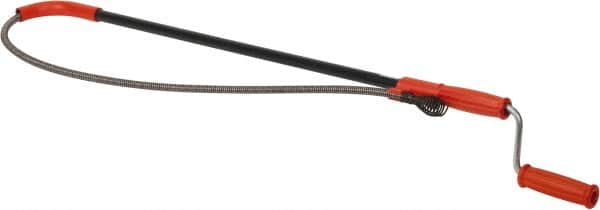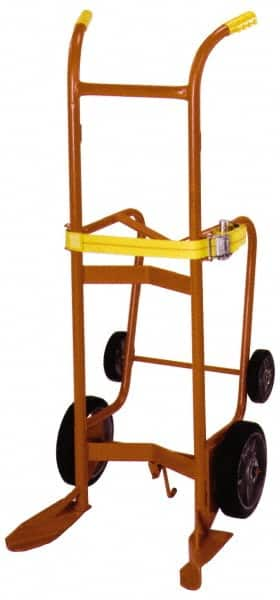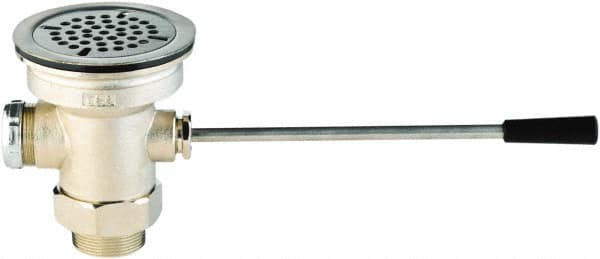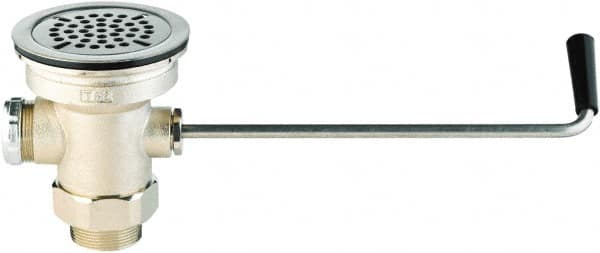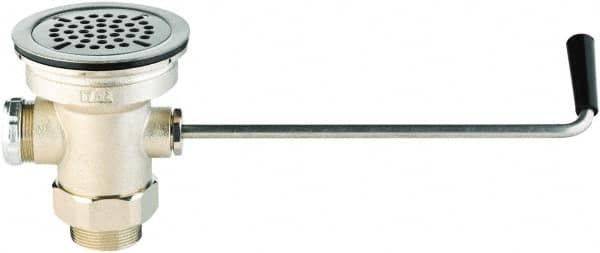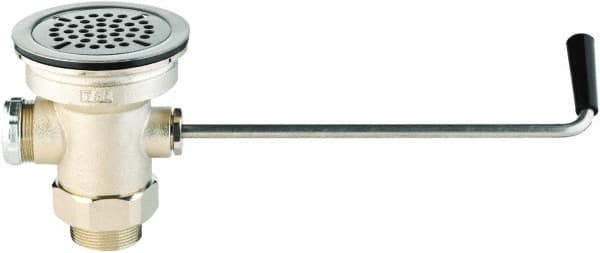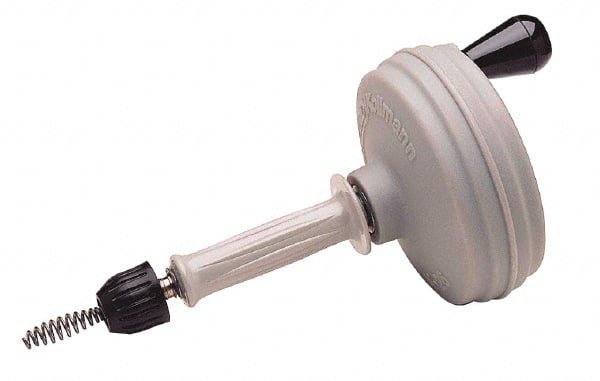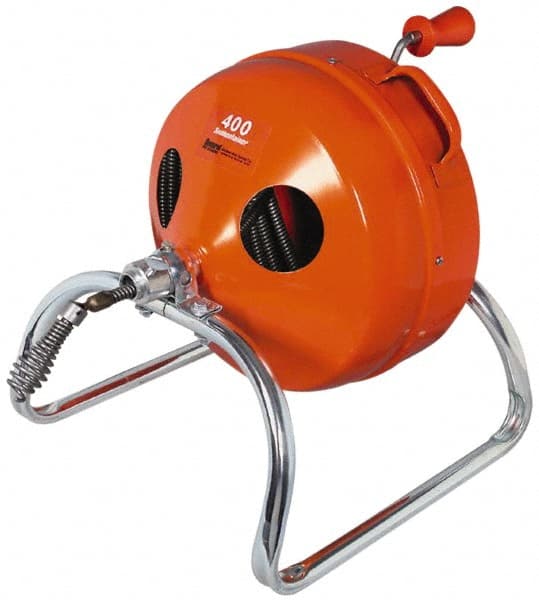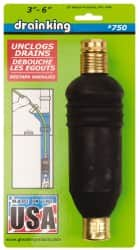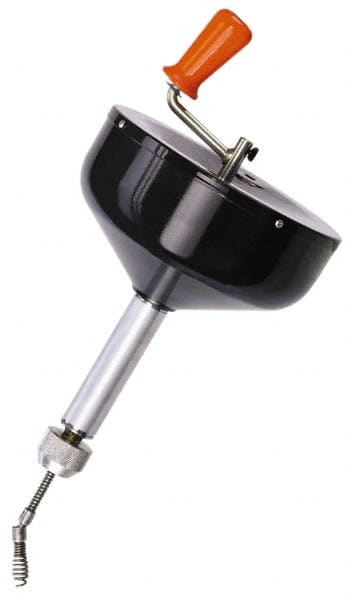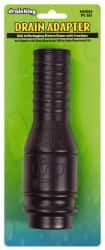Navigating the Complex World of Drain Clogs
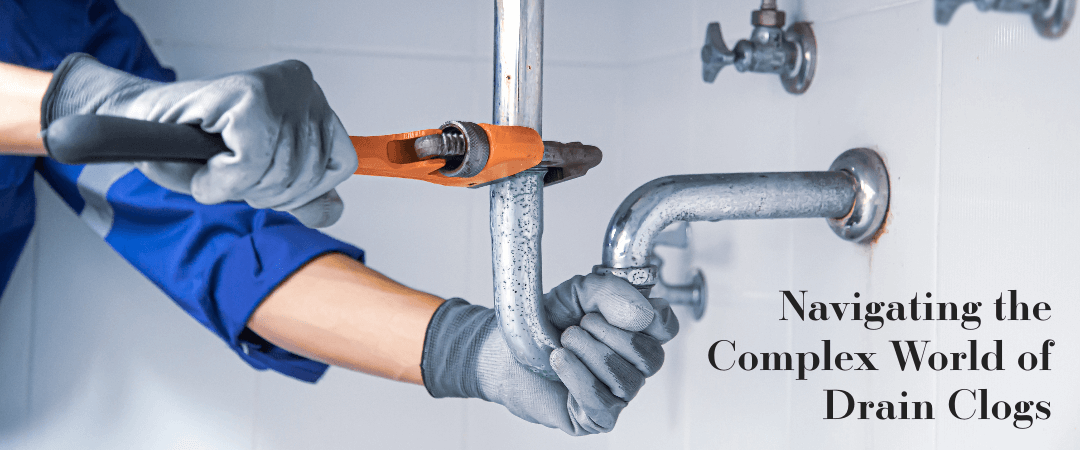
Introduction:
Drain clogs are a common but often frustrating problem faced by homeowners and businesses alike. From simple hair and grease buildup to more complex issues like collapsed pipes or tree root invasion, the causes of clogs are varied and require different approaches to resolve. Understanding the nature of the clog and the best way to address it is essential, whether you're reaching for a home remedy or calling in professional help. In this comprehensive guide, we explore the top reasons for drain clogs and provide detailed solutions, including homeopathic options, liquid solutions, specialized tools, and when to call a plumber. With GoVets' extensive range of products and commitment to quality, you'll find everything you need to tackle drain clogs with confidence.
Top 10 Reasons Why Drains Get Clogged
Hair and Grease Buildup: A Common Culprit in Clogged Drains
Hair and grease are among the most common causes of clogged drains in both residential and commercial settings. Whether it's hair from shaving and grooming or grease from cooking, these substances can accumulate over time, leading to slow or completely blocked drains. Here's a closer look at the top 5 ways to tackle this problem:
Homeopathic Option: Baking Soda and Vinegar Mixture
-
- How to Use: Pour a cup of baking soda into the drain, followed by a cup of vinegar. Let the mixture sit for 15-30 minutes, then flush with hot water. This natural reaction can dissolve minor clogs.
- When to Use: Ideal for early-stage clogs and regular maintenance.
Liquid Option: Commercial Drain Cleaner from Drain Cleaners & Openers
-
- How to Use: Follow the manufacturer's instructions, typically involving pouring the liquid into the drain and waiting for it to work before rinsing.
- When to Use: Suitable for moderate clogs where homeopathic options have failed.
Tool Option: Plunger or Manual Drain Cleaners
-
- How to Use: Use a plunger with an up-and-down motion to create suction and break up the clog. Manual drain cleaners can be used to reach and remove deeper clogs.
- When to Use: Effective for physical obstructions and combined hair and grease clogs.
Tool Option: Drain Snake
-
- How to Use: Insert the snake into the drain and turn the handle to break up the clog. This tool can reach deeper and handle more substantial clogs.
- When to Use: Best for stubborn clogs that other methods can't resolve.
Professional Service: Call a Plumber
-
- How to Use: If all else fails, calling a professional plumber ensures that the clog is handled safely and effectively without risking damage to your plumbing system.
- When to Use: Recommended for severe clogs or if you are unsure about the nature of the blockage.
Summary:
Hair and grease buildup can be a persistent problem, but with the right approach and tools, it's manageable. Regular maintenance and prompt attention to clogs can prevent more significant issues down the line. Explore GoVets' range of products and tools designed to tackle hair and grease clogs, ensuring that your drains remain clear and functional.
Soap Scum: A Slippery Challenge for Drains
Soap scum is a common issue in bathrooms and kitchens, where soap interacts with minerals in the water to form a sticky residue. This residue can adhere to pipes, gradually leading to clogs. Here's an in-depth look at the top 5 ways to handle soap scum clogs:
Homeopathic Option: Hot Water and Lemon Juice
-
- How to Use: Mix hot water with lemon juice and pour it down the drain. The acidity of the lemon juice combined with the hot water can dissolve the soap scum.
- When to Use: Ideal for minor clogs and as a preventive measure.
Liquid Option: Specialty Soap Scum Remover
-
- How to Use: Purchase a soap scum remover specifically designed for drains, and follow the manufacturer's instructions. These products are formulated to break down soap scum efficiently.
- When to Use: Suitable for more stubborn clogs that home remedies can't handle.
Tool Option: Plunger
-
- How to Use: Use a plunger with a vigorous up-and-down motion to create suction and pressure, helping to break up the soap scum clog.
- When to Use: Effective for physical obstructions and when combined with other methods.
Tool Option: Corded Drum Drain Cleaning Machines
-
- How to Use: These machines use a rotating action to reach deep into the drain and break up the clog. Follow the manufacturer's instructions for safe and effective use.
- When to Use: Best for severe clogs that other methods can't resolve, especially in commercial settings.
Professional Service: Call a Plumber
-
- How to Use: If the clog persists or you're unsure about handling it yourself, calling a professional plumber ensures proper diagnosis and treatment without risking damage to your plumbing system.
- When to Use: Recommended for complex clogs or if DIY methods have failed.
Summary:
Soap scum may seem like a minor inconvenience, but if left untreated, it can lead to significant clogs. Regular cleaning and prompt attention to slow-draining sinks can prevent bigger issues. Explore GoVets' range of products, including Corded Drum Drain Cleaning Machines, to find the perfect solution for soap scum challenges in your home or business.
Food Particles in Kitchen Sink: A Tasty Problem for Drains
Food particles are a common cause of clogs in kitchen sinks. Whether it's small bits of vegetables, grains, or grease, these particles can accumulate over time, leading to slow or completely blocked drains. Here's a comprehensive look at the top 5 ways to handle food particle clogs:
Homeopathic Option: Salt and Hot Water
-
- How to Use: Mix a cup of salt with hot water and pour it down the drain. The salt acts as an abrasive, while the hot water helps dissolve grease, breaking up the clog.
- When to Use: Ideal for minor clogs and as a regular maintenance routine.
Liquid Option: Kitchen-Specific Drain Cleaner
-
- How to Use: Purchase a drain cleaner specifically designed for kitchen sinks, and follow the manufacturer's instructions. These products are formulated to break down food particles and grease.
- When to Use: Suitable for more stubborn clogs that home remedies can't handle.
Tool Option: Plunger
-
- How to Use: Use a plunger with a strong up-and-down motion to create suction and pressure, helping to break up the food particle clog.
- When to Use: Effective for physical obstructions and when combined with other methods.
Tool Option: Sink Drain Pump Systems
-
- How to Use: These pump systems use suction to remove clogs from the drain. Follow the manufacturer's instructions for safe and effective use.
- When to Use: Best for severe clogs that other methods can't resolve, especially in commercial kitchen settings.
Professional Service: Call a Plumber
-
- How to Use: If the clog persists or you're unsure about handling it yourself, calling a professional plumber ensures proper diagnosis and treatment without risking damage to your plumbing system.
- When to Use: Recommended for complex clogs or if DIY methods have failed.
Conclusion:
Food particles in the kitchen sink can be a persistent problem, but with the right approach and tools, it's manageable. Regular maintenance and prompt attention to clogs can prevent more significant issues. Explore GoVets' range of products, including Sink Drain Pump Systems, to find the perfect solution for food particle challenges in your kitchen.
Foreign Objects: Unexpected Challenges for Drains
Foreign objects such as toys, utensils, or other small items accidentally falling into drains can lead to immediate and severe clogs. These clogs can be particularly challenging to remove, as they often require more than just dissolving or breaking up the obstruction. Here's a detailed look at the top 5 ways to handle foreign object clogs:
Homeopathic Option: Careful Manual Extraction
-
- How to Use: If the object is visible and within reach, carefully use tweezers or needle-nose pliers to grasp and remove it. Always turn off the water and be gentle to avoid pushing the object further down.
- When to Use: Ideal for superficial clogs where the object is accessible.
Liquid Option: Liquid Lubricant to Ease Removal
-
- How to Use: Apply a safe liquid lubricant that won't harm your pipes around the object, allowing it to slide more easily for manual extraction or other removal methods.
- When to Use: Suitable for objects that are stuck but reachable with tools.
Tool Option: Drain Cleaning Augers and Cutting Heads
-
- How to Use: These specialized tools can reach into the drain and either grasp the object or cut it into smaller pieces for removal. Follow the manufacturer's instructions for safe and effective use.
- When to Use: Best for objects lodged deeper in the drain that cannot be reached manually.
Tool Option: Plunger
-
- How to Use: A plunger can create suction and pressure to dislodge the foreign object, possibly bringing it closer to the drain opening for manual extraction.
- When to Use: Effective for objects that are not tightly wedged and may respond to force.
Professional Service: Call a Plumber
-
- How to Use: If the object is deeply lodged or the above methods fail, calling a professional plumber ensures proper diagnosis and safe removal without risking damage to your plumbing system.
- When to Use: Recommended for complex clogs, valuable objects, or if DIY methods have failed.
Conclusion:
Foreign objects in drains present unique challenges that often require specialized tools or professional assistance. Prompt attention and careful handling are key to successful removal. Explore GoVets' range of products, including Drain Cleaning Augers and Cutting Heads, to find the perfect solution for foreign object challenges in your drains.
Toilet Paper and Sanitary Products: Delicate Issues for Drains
Toilet paper and sanitary products are designed to be disposed of in toilets, but excessive use or flushing non-flushable items can lead to clogs. These clogs can be particularly troublesome, as they often occur in the most private and essential parts of our homes. Here's a comprehensive look at the top 5 ways to handle these clogs:
Homeopathic Option: Hot Water
-
- How to Use: Pouring hot (not boiling) water into the toilet bowl can help dissolve toilet paper and loosen clogs. Allow it to sit for a few minutes before attempting to flush.
- When to Use: Ideal for minor clogs caused by excessive toilet paper.
Liquid Option: Toilet-Specific Drain Cleaner
-
- How to Use: Purchase a drain cleaner specifically designed for toilets, and follow the manufacturer's instructions. These products are formulated to break down toilet paper and sanitary products without harming the porcelain.
- When to Use: Suitable for more stubborn clogs that hot water can't handle.
Tool Option: Toilet Plunger
-
- How to Use: Use a toilet plunger with a strong up-and-down motion to create suction and pressure, helping to break up the clog. Ensure a good seal for effective plunging.
- When to Use: Effective for most clogs, especially when combined with hot water or liquid cleaner.
Tool Option: Closet & Drain Augers
-
- How to Use: These specialized tools can reach into the toilet drain and break up or retrieve the clog. Follow the manufacturer's instructions for safe and effective use.
- When to Use: Best for severe clogs that a plunger can't resolve.
Professional Service: Call a Plumber
-
- How to Use: If the clog persists or you're unsure about handling it yourself, calling a professional plumber ensures proper diagnosis and treatment without risking damage to your toilet or plumbing system.
- When to Use: Recommended for complex clogs or if DIY methods have failed.
Conclusion:
Toilet paper and sanitary product clogs can be an embarrassing and inconvenient problem, but with the right approach and tools, they're manageable. Regular care and prompt attention to clogs can prevent more significant issues. Explore GoVets' range of products, including Closet & Drain Augers, to find the perfect solution for these delicate challenges in your bathroom.
Mineral Buildup: A Hardened Challenge for Drains
Mineral buildup, often referred to as "scale," occurs when minerals like calcium and magnesium accumulate inside pipes. Over time, this buildup can narrow the pipe's interior, leading to slow drainage or complete blockages. Here's a detailed look at the top 5 ways to handle mineral buildup clogs:
Homeopathic Option: Vinegar Soak
-
- How to Use: Vinegar's acidity can dissolve mineral deposits. Pour a cup of vinegar into the drain, let it soak for at least an hour, then flush with hot water.
- When to Use: Ideal for early-stage buildup and as a preventive measure.
Liquid Option: Mineral Dissolving Agent
-
- How to Use: Purchase a cleaner specifically designed to dissolve mineral buildup, and follow the manufacturer's instructions. These products are formulated to break down mineral deposits without harming pipes.
- When to Use: Suitable for more stubborn buildup that vinegar can't handle.
Tool Option: Cordless Drain Cleaning Guns
-
- How to Use: These tools use pressurized air or water to break up mineral clogs. Follow the manufacturer's instructions for safe and effective use.
- When to Use: Best for hardened clogs that liquid solutions can't resolve.
Tool Option: Plunger
-
- How to Use: A plunger can create suction and pressure to dislodge mineral buildup, especially when used in conjunction with a dissolving agent.
- When to Use: Effective for loosening minor clogs and as a first step before using more aggressive tools.Professional Service: Call a Plumber
-
- How to Use: If the buildup is extensive or the above methods fail, calling a professional plumber ensures proper diagnosis and removal without risking damage to your plumbing system.
- When to Use: Recommended for complex clogs, especially in older plumbing systems where DIY methods may be risky.
Conclusion: Mineral buildup in drains can be a slow-developing but serious problem, leading to reduced water flow and potential damage to pipes. Regular monitoring and prompt attention to signs of buildup can prevent more significant issues. Explore GoVets' range of products, including Cordless Drain Cleaning Guns, to find the perfect solution for mineral buildup challenges in your drains.
Tree Roots: A Growing Problem for Drains
Tree roots can be a significant challenge for underground pipes. Drawn to the moisture and nutrients found in sewer lines, roots can infiltrate and block pipes, leading to serious drainage issues. This problem often requires professional intervention, but here's a detailed look at the top 5 ways to handle tree root clogs:
Homeopathic Option: Not Applicable
-
- Tree roots in drains are a severe issue that typically requires professional tools or chemicals to address. Home remedies are unlikely to be effective.
Liquid Option: Root-Killing Chemicals
-
- How to Use: Specialized root-killing chemicals can be poured into the drain, where they kill the invading roots and prevent further growth. Follow the manufacturer's instructions carefully, as improper use can harm other plants.
- When to Use: Suitable for early-stage root invasion or as a preventive measure in areas prone to this issue.
Tool Option: Professional Root Cutting Tools
-
- How to Use: These specialized tools can cut through roots inside the pipe. They are typically used by professionals, as improper use can damage pipes.
- When to Use: Best for significant root invasion that chemicals can't resolve.
Tool Option: Cordless Drum Drain Cleaning Machines
-
- How to Use: These machines use a rotating action to cut through roots and other obstructions in the drain. Follow the manufacturer's instructions for safe and effective use.
- When to Use: Effective for cutting through roots in accessible parts of the drain system.
Professional Service: Call a Plumber
-
- How to Use: Tree root invasion often requires professional diagnosis and treatment. Plumbers have specialized tools and knowledge to safely remove roots without damaging pipes or nearby plants.
- When to Use: Recommended for complex clogs, especially if DIY methods have failed or the situation is unclear.
Conclusion:
Tree roots in drains are a complex problem that often requires professional intervention. Early detection and preventive measures can minimize damage, but serious invasions typically require specialized tools or services. Explore GoVets' range of products, including Cordless Drum Drain Cleaning Machines, to find the perfect solution for tree root challenges in your drains.
Collapsed or Damaged Pipes: A Critical Situation for Drains
Collapsed or damaged pipes are a severe plumbing issue that can lead to complete blockages and significant property damage. Unlike typical clogs, this problem often requires immediate professional intervention. Here's a detailed look at the top 5 ways to handle collapsed or damaged pipes:
Homeopathic Option: Not Applicable
-
- Collapsed or damaged pipes are a structural issue that cannot be addressed with home remedies.
Liquid Option: Not Applicable
-
- Liquid solutions are not suitable for resolving physical damage to pipes.
Tool Option:Borescopes, Inspection Cameras & Video Borescopes
-
- How to Use: An inspection camera can be inserted into the drain to visually assess the damage and determine the location and extent of the collapse.
- When to Use: Ideal for diagnosing the problem and planning repairs, especially in hard-to-reach areas.
Tool Option: Professional Pipe Repair Tools
-
- How to Use: Specialized pipe repair tools can be used to fix or replace damaged sections of pipe. This process typically requires professional training and experience, as improper repairs can lead to further damage.
- When to Use: Suitable for minor damage that can be repaired without complete replacement.
Professional Service: Call a Plumber
-
- How to Use: Collapsed or damaged pipes often require immediate professional intervention. A licensed plumber can accurately diagnose the problem, determine the best course of action, and carry out repairs or replacements as needed.
- When to Use: Recommended for any signs of collapsed or damaged pipes, especially if the situation is urgent or complex.
Conclusion:
Collapsed or damaged pipes are a serious and often urgent problem that typically requires professional expertise. DIY methods are generally limited to diagnosis, and improper repairs can exacerbate the problem. Explore GoVets' range of products, including Borescopes, Inspection Cameras & Video Borescopes, to assist in initial assessment, but do not hesitate to call a plumber for this critical situation in your drains.
Improper Installation: A Fundamental Flaw in Drains
Improper installation of plumbing can lead to a host of problems, including leaks, slow drainage, and complete blockages. This issue often stems from fundamental errors in the installation process, such as incorrect pipe sizing, poor connections, or inadequate slope. Here's a detailed look at the top 5 ways to handle improper installation:
Homeopathic Option: Not Applicable
-
- Improper installation is a structural issue that cannot be addressed with home remedies.
Liquid Option: Not Applicable
-
- Liquid solutions are not suitable for resolving installation errors in pipes.
Tool Option: Plumber's Wrench
-
- How to Use: A plumber's wrench can be used to tighten or adjust connections, align pipes, or make minor corrections to installation errors. Knowledge of plumbing is essential to avoid further damage.
- When to Use: Suitable for minor adjustments that do not require complete reinstallation.
Tool Option: Drain Components for Repair
-
- How to Use: Replacement or additional drain components may be needed to correct installation errors. This may include new pipes, fittings, seals, or other parts, depending on the specific issue.
- When to Use: Ideal for situations where parts are missing, incorrect, or damaged due to improper installation.
Professional Service: Call a Plumber
-
- How to Use: Improper installation often requires professional diagnosis and correction. A licensed plumber can assess the situation, identify the errors, and carry out the necessary repairs or reinstallation.
- When to Use: Recommended for any signs of improper installation, especially if the situation is complex or beyond the scope of DIY repair.
Conclusion:
Improper installation of plumbing is a complex issue that often requires professional expertise. While minor adjustments may be possible with the right tools, significant errors typically require professional correction. Explore GoVets' range of products, including Drain Components, to assist in minor repairs, but do not hesitate to call a plumber for comprehensive solutions to this foundational problem in your drains.
Excessive Use of Drain Cleaners: A Cautionary Tale for Drains
While drain cleaners can be effective in clearing clogs, excessive use or misuse can lead to new problems. Overuse of harsh chemicals can damage pipes, harm the environment, and even create new clogs by causing residue to adhere to the pipe walls. Here's a detailed look at the top 5 ways to handle clogs caused by excessive use of drain cleaners:
Homeopathic Option: Flush with Hot Water
-
- How to Use: Flushing the drain with hot (not boiling) water can help dissolve and wash away residue left by excessive drain cleaner use. It's a gentle approach that can be repeated as needed.
- When to Use: Ideal for minor residue buildup and as a first step in addressing the problem.
Liquid Option: Neutralizing Agent
-
- How to Use: Specialized neutralizing agents can counteract the effects of excessive drain cleaner, balancing the pH and reducing harm to pipes. Follow the manufacturer's instructions carefully.
- When to Use: Suitable for situations where the drain cleaner has caused noticeable damage or is not flushing away with hot water.
Tool Option: Plunger
-
- How to Use: A plunger can create suction and pressure to dislodge residue and clogs caused by excessive drain cleaner use. Ensure a good seal for effective plunging.
- When to Use: Effective for loosening minor clogs and as a first step before using more aggressive tools.
Tool Option: Manual & Hand Drain Cleaners
-
- How to Use: These tools can physically remove residue and clogs from the drain. Follow the manufacturer's instructions for safe and effective use.
- When to Use: Ideal for more stubborn clogs that a plunger can't resolve.
Professional Service: Call a Plumber
-
- How to Use: If the clog persists or you're unsure about handling it yourself, calling a professional plumber ensures proper diagnosis and treatment without risking further damage to your pipes.
- When to Use: Recommended for complex clogs or if DIY methods have failed.
Conclusion:
Excessive use of drain cleaners is a preventable problem that can be addressed with careful use and prompt attention to clogs. Regular care and the right approach can prevent more significant issues. Explore GoVets' range of products, including Manual & Hand Drain Cleaners, to find the perfect solution for these challenges in your drains.
DIY or Call a Plumber: Making the Right Choice
When faced with a plumbing issue, it's essential to assess whether it's a task you can handle yourself or if it's time to call a professional plumber. Here's how to make that decision:
- Assess the Complexity: Simple clogs or minor leaks may be addressed with basic tools and knowledge. More complex issues like pipe replacement or dealing with tree roots likely require a plumber's expertise.
- Consider Your Skills and Tools: Do you have the necessary tools and know-how to handle the job? If not, a professional may be the safer choice.
- Evaluate the Risks: Mistakes in plumbing can lead to significant damage and costly repairs. If the job involves major plumbing components or you're unsure about the process, it's wise to consult a professional.
- Check Local Regulations: Some plumbing work may require permits or licensed professionals, especially in commercial settings. Be sure to comply with local laws.
- Trust Your Instincts: If you feel uncertain or overwhelmed, it's always best to call a plumber. Professionals have the training, tools, and experience to handle the job efficiently and safely.
Summary: While DIY can be satisfying and cost-effective for minor issues, knowing when to call a plumber is crucial. Making the right choice ensures the job is done correctly, preserving the integrity of your plumbing system and avoiding potential disasters.
Symptoms That a Liquid (Chemical) Solution is Failing or Damaging the Drain
Using a liquid or chemical solution is a common method to unclog drains. However, it's essential to recognize when this approach is not working or, worse, causing harm to the plumbing system. Here are the signs to watch for:
- Persistent Clogging: If the drain remains clogged or slow-flowing after using the liquid solution, it's a clear sign that the chemical has not effectively dissolved the blockage.
- Unusual Odors: Strong, lingering odors after using the liquid solution may indicate that the chemical is reacting adversely with the materials in the drain, potentially leading to corrosion or other damage.
- Discoloration or Staining: If you notice discoloration or staining around the drain, sink, or tub, it may be a sign that the chemical solution is too harsh and is affecting the finish or material of the plumbing fixtures.
- Weakened or Softened Pipes: Some chemical solutions can weaken or soften plastic pipes, leading to leaks or breaks over time. If you notice any changes in the pipe's integrity, it may be a sign of chemical damage.
- Corrosion: Metal pipes may show signs of corrosion after using a chemical solution, especially if used repeatedly or in large quantities. Look for rust or pitting on the pipe's surface.
- Environmental Impact: If the liquid solution is not eco-friendly, it may have harmful effects on the environment, especially if used excessively. This may not be immediately visible in the drain but can have long-term consequences.
- Adverse Reactions with Other Substances: Mixing different chemical solutions or using them in conjunction with other cleaning products can lead to dangerous reactions, producing toxic fumes or further clogging.
- Increased Use Without Results: If you find yourself repeatedly using the liquid solution without any improvement in the drain's performance, it's a sign that the solution is not suitable for the type of clog you're dealing with.
- Health Symptoms: Prolonged exposure to harsh chemicals can lead to skin irritation, respiratory issues, or other health problems. Always follow the manufacturer's instructions and take proper precautions.
Summary: Recognizing these symptoms early can prevent further damage to your plumbing system and help you choose a more effective and safe method for unclogging the drain. If you suspect that a liquid solution is causing harm, it may be wise to consult with a professional plumber or explore alternative products from GoVets' range of Drain Cleaners and Openers that are designed for different types of clogs and plumbing materials.
Conclusion: Choose GoVets for All Your Drain Clog Solutions
Drain clogs are more than an inconvenience; they can lead to serious plumbing issues if not addressed promptly and correctly. With GoVets, you have access to a wide array of tools, cleaners, and equipment specifically designed to tackle any clog, from the simplest to the most complex. As a trusted and socially responsible business, GoVets offers quality products with free shipping within the 48 contiguous United States. Whether you're a DIY enthusiast or a professional plumber, GoVets is your one-stop shop for all your drain clog needs. Choose GoVets, and experience the ease of finding the right solutions, all in one place.
Product Recommendations:
Browse the following Draing Cleaning Equipment for additional ideas on how to solve your Drain Clog Issues


